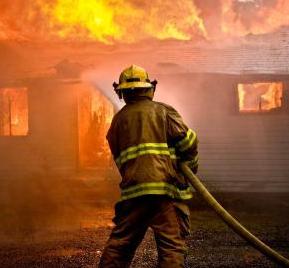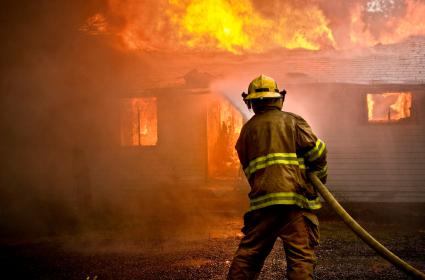 By Emily Miller
By Emily Miller
With the holiday season coming to a close and the New Year fast approaching, it is important to make sure your home is prepared for the dry, cold season ahead of us.
Household fires are more likely to occur during the winter months due to the cold weather, dry air and furnaces running on overdrive. Another contributing factor is all of the holiday decorations spread throughout the inside and outside of your home.
A dried out Christmas tree, a lit candle or even an overworked set of holiday lights could quickly go from being a harmless decoration to the cause of a fire in seconds.
“As time goes by, Christmas trees continue to dry out and become increasingly flammable,” said Lorraine Carli, Nation Fire Protection Association, vice president of communications. “For trees decorated with holiday lights, the risk increases because they’re in direct contact with an electrical source.”
According to the NFPA, from 2007 to 2011, U.S. fire departments responded to an estimated annual average of 230 home structure fires that were caused by dried out Christmas trees. A third of the fires were caused by electrical failures or malfunctions, and nearly
While Christmas tree fires are not common, when they do occur they can be very serious. On average, one of every 40 reported home structure Christmas tree fires resulted in a death.
An important piece of advice to determining if a tree has dried out is to examine the number if needles it drops every day. Once the number of dropped needles increases dramatically, the tree is no longer fresh and should be thrown away.
However, dried trees that are ready to be thrown out should not be kept in the garage or even placed outside against the side of the house. They should be disposed of at your local community recycling center.
From 2007 to 2011 holiday lights and other decorative lighting were involved in an annual average of 160 home fires, nine civilian deaths, 13 related injuries, and $9 million in direct property damage.
To reduce the risk of holiday light fires and keep equipment in good condition for next year, follow these storage suggestions:
· To unplug electric decorations, use the gripping area provided on the plugs. Never pull the cord to unplug a device from electrical outlets. Doing so can harm the cord’s wire and insulation and even lead to an electrical shock or fire.
· When putting away electrical light strings, take time to inspect each of them for damage. Throw out light sets if they have loose connections, broken sockets or cracked or bare wires.
· Do not place a damaged set of lights back into the storage box for next year’s use.
· Wrap each set of lights and put them in individual plastic bags, or wrap the lights around a piece of cardboard.
· Store electrical decorations in a dry place where they cannot be damaged by water or dampness. Also, keep them away from children and pets.
The NFPA and the U.S. Fire Administration have teamed up again to remind everyone about ways to keep warm and safe throughout the winter months. Their joint safety campaign, “Put a Freeze on Winter Fires,” includes a wealth of heating, cooking and holiday fire safety tips.
In the video above, the tree on the left is dry. The tree on the right had been watered regularly.












